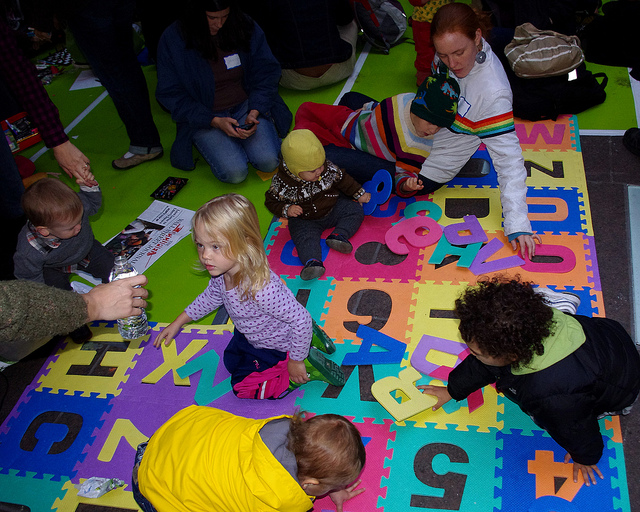New Coalition Wins Fight for Childcare and Afterschool Programs
 After months of high-stakes volleying, a new coalition of advocates won a decided victory in the latest round of New York City budget ping-pong: Mayor Bloomberg and the City Council announced a deal on Monday to save slots for about 47,000 children in childcare and afterschool programs that were set to be slashed in the city’s 2012-2013 budget.
After months of high-stakes volleying, a new coalition of advocates won a decided victory in the latest round of New York City budget ping-pong: Mayor Bloomberg and the City Council announced a deal on Monday to save slots for about 47,000 children in childcare and afterschool programs that were set to be slashed in the city’s 2012-2013 budget.
Details of the plan won’t be released until Thursday, when the council holds its formal budget vote, but the childcare and afterschool slots will be reinstated with about $150 million in additional funding for the Administration for Children’s Services and the Department of Youth and Community Development, according to a press release from the mayor’s office.
Just this February, when Bloomberg released his proposed Executive Budget for the coming fiscal year, circumstances looked unusually dire for programs that provide childcare to the city’s lowest-income families. Over the past four years, the city has already cut funding for more than 40,000 slots in the programs. The new reductions would have eliminated 15,900 more childcare slots and slashed afterschool program capacity by 50 percent, cutting services to nearly 32,000 children. The changes appeared inevitable when new contracts were announced several weeks ago, eliminating hundreds of programs and shrinking many more.
The city’s nonprofits are accustomed to the annual budget fight over services for low-income children and families. But this was the first year that two major advocacy camps joined forces: Traditionally, organizations that serve babies and toddlers have come together under one coalition, while those that fight for programs for school-aged kids have joined forces under another, says Katherine Eckstein, the director of public policy at the Children’s Aid Society. The result is that they can end up splitting resources and competing for the same pots of money.
“Advocacy often revolves around particular funding streams,” says Eckstein. “This year we made a conscious decision that we would work together, we wouldn’t be divided. This was about a vision for children. If there was an event at a childcare center, they were talking about afterschool; if there was an event at an afterschool program, they were talking about childcare.”
That language seeped into policy conversations and media reports, which have consistently grouped early childcare and afterschool programs into a unified category over the course of this year’s budget wrangling.
The groups came together to form the Campaign for Children, an alliance that grew to include more than 150 community organizations and service providers. Since February, Eckstein estimates that the campaign organized more than 60,000 petition signatures and protest letters, which were delivered to Mayor Bloomberg and members of the City Council, as well as thousands of direct phone calls and at least 100 marches, rallies and press conferences. “I’ve never seen community mobilization like I did this year,” she says.
The fight resulted in a big win, but that doesn’t mean the money—or the programs it funds—is safe for the foreseeable future. Eckstein says that only $40 million of the restored funding will be added to the city’s baseline budget, while the rest will come from discretionary funds allocated by the City Council each year—meaning that service providers have no way of knowing whether their programs will survive past the next round of cuts.
Eckstein says that this year’s coalition is already planning for a unified fight over the long-term. “It’s about sustaining the funding in the future, and then it’s about moving beyond, to a vision for what kind of opportunities the children of New York City deserve. We want to give every kid in the city the opportunity to achieve their dreams. Today we’re one step closer to that.”